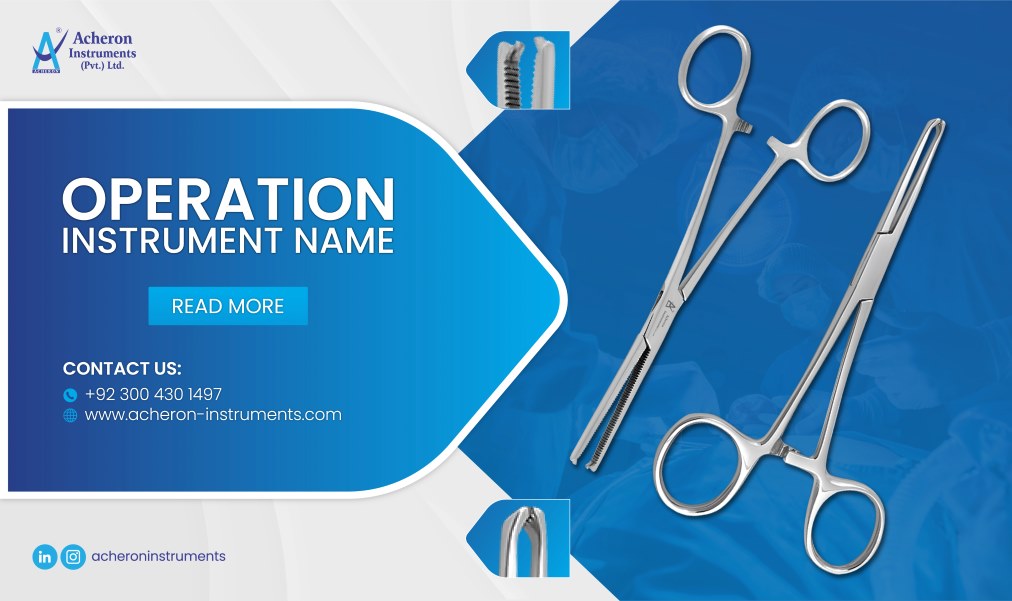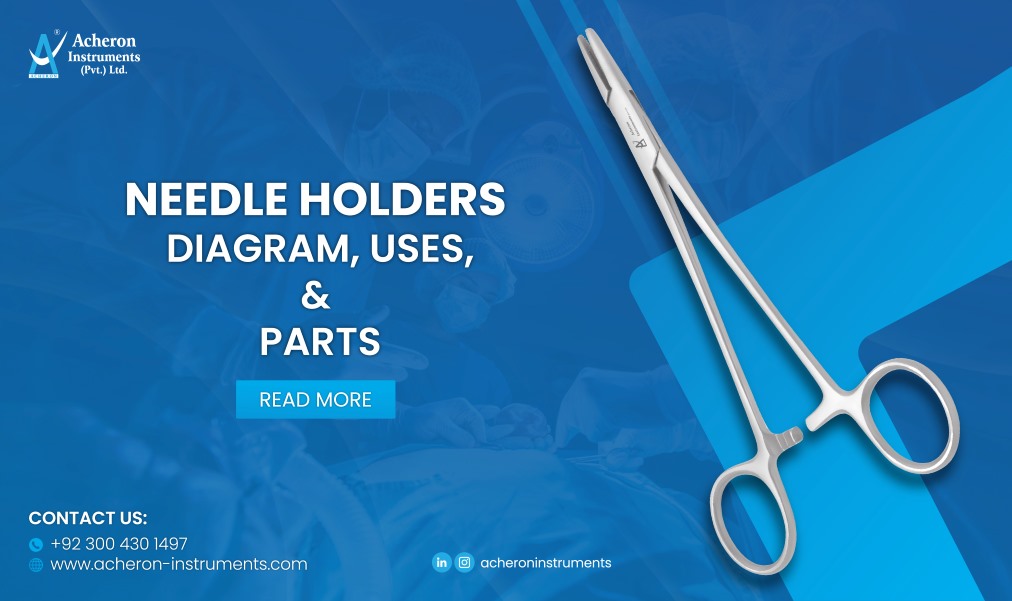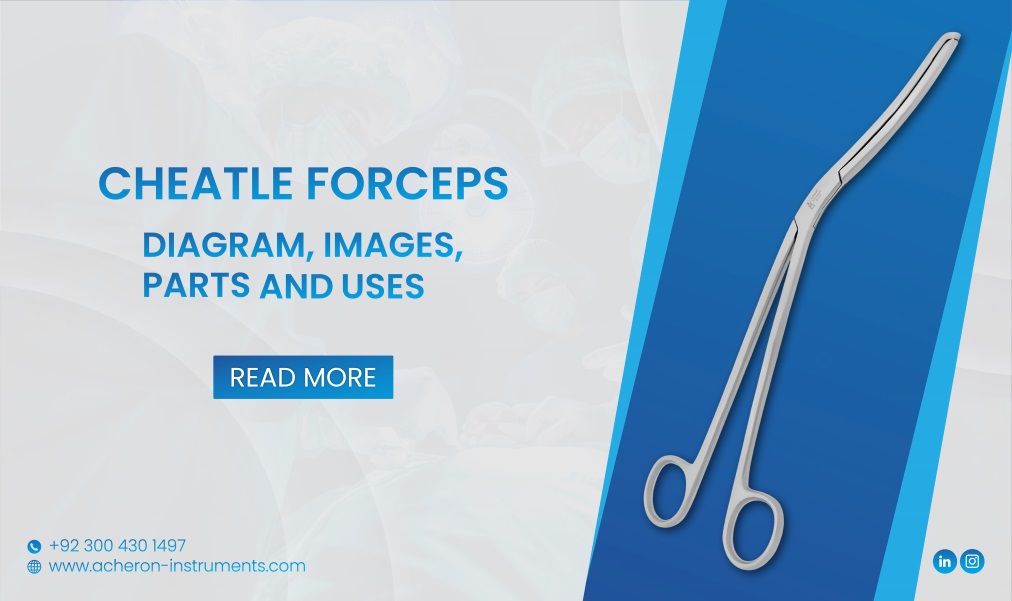 Before searching for which are the largest hemostat forceps, you need to know what are hemostats and why they are important. Hemostat forceps also called hemostats are a type of surgical instrument that are designed to control and clamp blood vessels as well as tissues in different medical scenarios. These tools are vital components of any surgical toolkit. Also, these forceps make the surgeon’s task much easier and fatigue-free with their numerous benefits. These forceps are temporarily used to restrict or block the blood flow in the patient’s body. Thus, allowing surgeons to work safely and more effectively.
Before searching for which are the largest hemostat forceps, you need to know what are hemostats and why they are important. Hemostat forceps also called hemostats are a type of surgical instrument that are designed to control and clamp blood vessels as well as tissues in different medical scenarios. These tools are vital components of any surgical toolkit. Also, these forceps make the surgeon’s task much easier and fatigue-free with their numerous benefits. These forceps are temporarily used to restrict or block the blood flow in the patient’s body. Thus, allowing surgeons to work safely and more effectively.
Several types of hemostat forceps are available in multiple sizes and designs. Each kind of hemostat forceps is designed for specific surgical needs. However, all hemostat forceps generally comprise serrated jaws and locking handles to securely hold and clamp tissues, blood vessels, and other structures. Some commonly used hemostat forceps include:
- Hartman mosquito forceps
- Halsted mosquito forceps
- Crile forceps
- Kelly forceps
- Rochester Pean forceps
- Rochester Ochsner forceps
- Allis forceps
The Largest Hemostat Forceps
When it comes to the largest hemostat forceps, the Kelly and Crile varieties stand out. These forceps are notable for their strength and size, making them suitable for more substantial vessels and tissues.
Kelly hemostats:
These surgical forceps have a scissor-like design with hinged and locking handles. This design assists surgeons in holding and clamping blood vessels and tissues securely. This surgical tool has serrated jaws to hold and grip the tissues and blood vessels firmly. The serrated jaws also prevent slippage. Additionally, They comprise tapered jaws that ensure narrow surgical access. Also, these hemostats are available in multiple sizes typically ranging from 5.5 to 9 inches. Moreover, both straight and curved variations are available for this tool. The specific size and design can be selected based on the surgeon's needs and the size of the vessels or tissues being clamped. Kelly forceps also feature ergonomically designed finger rings to prevent accidental slippage and gain maximum control.
Crile forceps:
Surgeons usually prefer these forceps to clamp blood vessels in different surgical scenarios, especially small arteries. Crile hemostatic forceps are useful to grip sutures, tissues, and disposable materials. This tool features ergonomic finger ring handles for optimal control. In addition to that, they also feature 1 x 2 optional teeth that are vital for enhanced clamping. Also, the transverse serrations on its jaws prevent slippage and endothelial damage. The unique design of this instrument is suitable for reaching narrow sites and also provides an atraumatic and strong grip. Moreover, this instrument features a ratchet mechanism to apply clamping pressure as per one’s need.
Uses of large hemostat forceps
Large hemostat forceps are widely used in multiple surgical practices. Some of the common uses include:
- Clamping blood vessels: These forceps are ideally used to clamp large blood vessels. This is important for facilitating surgical access and controlling bleeding
- Organ retraction: Surgeons use these forceps to gently retract and hold tissues and organs. This allows them to effectively access the surgical areas.
- Tissue manipulation: Surgeons use these forceps to hold and manipulate various tissues during surgical procedures to ensure they remain in their desired position.
- Hemostasis: These surgical instruments are best for achieving adequate hemostasis which is referred to as a process to stop bleeding. This is especially useful in major surgeries
Applications of large hemostats
Large hemostats are versatile surgical tools that are used in multiple medical specialties. Here are some surgical procedures and medical specialties where hemostat forceps find common use:
General surgery: Hemostat forceps are utilized in a broad spectrum of general surgical procedures, including cholecystectomies (gallbladder removal), bowel surgeries, appendectomies, and more. They help control bleeding and manipulate tissues.
Neurosurgery: These forceps assist neurosurgeons in managing blood
vessels and tissues in the delicate environment of the brain and spinal cord.
Gynecological Surgery: Hemostat forceps
are useful for tissue manipulation and hemostasis in gynecological procedures like hysterectomies and ovarian surgeries.
Vascular Surgery: In procedures involving blood vessels, such as aneurysm repairs, bypass surgeries, or vascular grafts, larger hemostats are crucial for clamping and controlling vessels.
Orthopedic Surgery: Hemostats are useful to manipulate soft tissues and blood vessels during orthopedic surgeries, including fracture repairs, joint replacements, and spinal surgeries.
The application of these forceps doesn’t end here. The widespread use of these instruments also includes microsurgery, ENT surgery, Dental and oral surgery, plastic surgery, ophthalmic surgery, cardiothoracic surgery, and pediatric surgery, etc.
Difference between Kelly forceps and Crile forceps
Kelly forceps and Crile forceps are similar in design and serve a similar purpose too i.e. manipulating blood vessels and controlling blood flow. However, there are some key differences between these two:
- Kelly forceps are generally preferable for delicate surgical procedures whereas Crile forceps are well suited for a broader range of applications
- Kelly forceps feature curved and fine tips whereas Crile forceps have relatively broader and robust tips with serrations
- Kelly forceps generally comprise half-serrated jaws whereas Crile forceps have fully-serrated jaws
Care and Storage
Proper storage and care of Hemostatic forceps, as with any surgical instruments, are essential to maintain their functionality, longevity, and hygiene. Here are some guidelines for storing and taking care of these forceps:
- After each use, immediately clean the forceps to remove any blood, tissue, or debris. Use a mild detergent or enzymatic cleaner and warm water.
- Sterilize the cleaned instruments using an appropriate sterilization method. Common methods include autoclaving (steam sterilization), ethylene oxide (EtO) gas sterilization, or low-temperature hydrogen peroxide gas plasma sterilization. Also, follow the guidelines for the specific instrument to ensure proper sterilization.
- Regularly inspect the forceps for any signs of wear, damage, or corrosion. This includes checking the serrations on the jaws for sharpness and the handles for any loosening.
- Lubricate any moving parts, such as the pivot point, with a surgical instrument lubricant. This aids in ensuring smooth operation and guards against rust or corrosion.
- After sterilizing, make sure to thoroughly dry the forceps. Moisture can promote corrosion. Also, consider using forced air or high-quality drying cabinets designed for surgical instruments.
- Store these forceps in a clean and dry environment. To prevent accidental harm or contact with other instruments, keep them in a specific place or tray. This will also help avoid rust or any other kind of harm.
- If the serrations on the jaws become dull over time, it is advisable to have a professional instrument sharpening service sharpen the forceps. This is because dull serrations can lead to slippage during use.
- Use the forceps only for their intended purpose—grasping and clamping blood vessels or tissues. Avoid using them to manipulate non-medical objects, as this can damage the serrations.
- Always handle forceps with care. Avoid dropping them or subjecting them to unnecessary force, as this can damage the instrument.
Why chose Acheron Instruments?
Acheron Instruments provides the best quality German-grade stainless steel surgical instruments to enhance surgical performance and precision in healthcare departments. Also, we have ISO-certified our forceps to uphold a systematic approach to quality control. We have an extensive range of hemostatic forceps that you can use in your operating rooms in the long run for their high quality and durability.
Conclusion
Large hemostats help surgeons save lives and improve patient outcomes by ensuring that surgical sites remain clear and blood loss is minimized. Not only that, these instruments also play a vital role in modern surgery, offering precision and control in various medical procedures. You cannot underestimate the importance of these surgical tools in your operating room toolkits. Hence, you must choose the right products for your operating rooms! And for that purpose, you’ve reached the right place! Don’t forget to check our website for the best quality surgical instruments at the most reasonable prices.
FAQ’s
How are hemostat forceps different from regular surgical forceps?
The primary difference is that hemostat forceps are useful for hemostasis only, while regular surgical forceps are versatile tools for various surgical tasks.
Are there different sizes of hemostat forceps available for different surgical procedures?
Yes, there are different sizes of hemostat forceps available to suit various surgical procedures.
How do surgeons choose the size of hemostatic forceps for a particular surgical procedure?
Surgeons chose these forceps based on specific surgical requirements, such as the size of blood vessels or tissues to be clamped, the surgical site's accessibility, and the surgeon's preference for instrument control.








